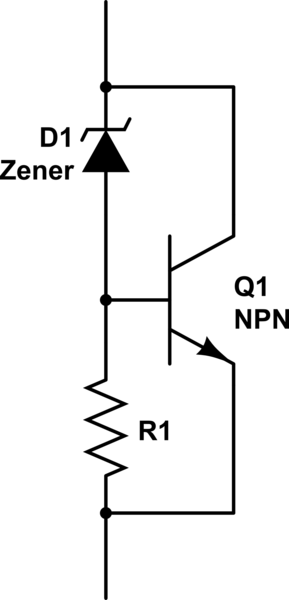This is a spin-off of the question I've asked before. I've received many interesting answers and summarized them there. I also accepted most interesting suggestion. During this time we also bought and tested two commercial devices, EM-A43 and LUGE-SR060 with external resistor. They work as expected but are expensive and have inconvenient (in our particular case, not in general) form factor.
So, I'd like to proceed with developing of our own device, and for this I need some help. I've selected two options from earlier discussion: comparator with MOSFET/IGBT and linear regulator with BJT.

It is my understanding that the first circuit will work by rapid on/off switching, potentially creating a lot of noise. Also powering the comparator and gate driver from the very voltage being controlled might be problematic. On a plus side, the bulk of the dissipation will be on a resistor, with only switching losses on the FET.
The second circuit will control resistor current, keeping the voltage mostly constant. However selection of the resistor will be crucial, and the power dissipated on the transistor can be very high. I am planning on using MJH6284G with HS300-1R8-J or CJP400J1R8J.
I did preliminary calculations and stumbled upon an interesting phenomena. Let's say the circuit is designed to dissipate 450W. With 1.8R resistor it will dissipate 400W, the remaining 50W will be on transistor. However if the brakes applied gradually, the total power and current drop linearly, while the dissipation on the resistor drops squarely (due to 2 in I2R). For example 300W will be split 180/120 between resistor and transistor. This makes me worry of the second solution.
Requirements:
Total weight 230kg braking from 10km/h to full stop in 2s => 890J, 450W.
Voltage threshold 30V.
Questions:
- Which circuit configuration is beter?
- Are my calculations for power distribution between resistor and transistor correct?
- How to power both circuits, considering the voltage fluctuations generated by circuits themselves?
- Does the second circuit need biasing or bipolar supply and how can I implement it?
Clarifications:
The title refers to the control signal going into power stage. It is discrete on/off in case of comparator and linear when coming from differential amplifier.
It is important to notice that this circuit will only activate when the battery is fully charged AND the braking is hard or long. It can activate while driving down slope or hard braking right after disconnecting the charger, which may be never for any particular user. In all other cases the regen will simply be absorbed by the battery.
UPDATE
We have received additional info on the inner workings of the motor controller from the manufacturer. It turns out @MathKeepsMeBusy was spot on re charging pump involved in regen:
During regen the motor together with the associated bridge components create a boost converter. Since the motor has an inductance and together with the high and low-side FETs it becomes a boost converter SMPS, where turning on the low-side FET (high-side off) will cause the inductor in the motor to charge up and then turning on the high-side FET (low-side is off) the converter enters flyback mode and the current flows into the battery rail.
This does not change the question in any way, I just wanted to mention this interesting mechanism that turned my understanding of the process upside down.

